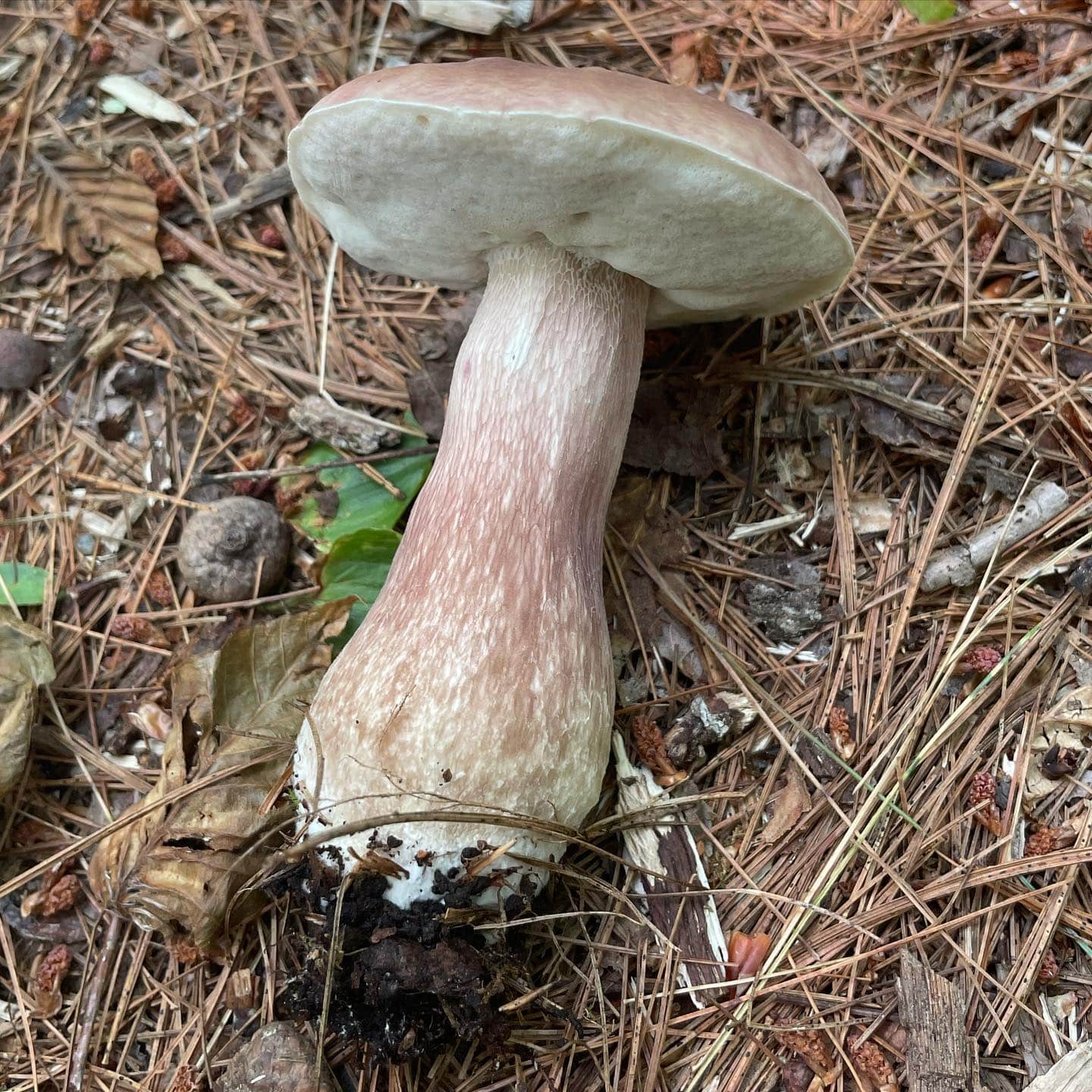Page Created by Connecticut Foraging Club
Upcoming Events | Meet the Instructors | Plant Archive | Mushroom Archive
----------------
Upcoming Events | Meet the Instructors | Plant Archive | Mushroom Archive
----------------
The Lilac Bolete (Boletus separans) is a choice edible mushroom related to the King Bolete (Boletus edulis).

Lilac boletes can be found in eastern North America from July-September. They have a mycorrhizal relationship with hardwood trees, especially red oaks.

Lilac boletes can be identified by their purplish stalk with white reticulation (netting). Cap color varies from light brown to purplish. Pore surface is white when the mushroom is young and turns pale yellow with age. The mushroom does not change color when bruised. Spore print will be olive brown.

Lilac boletes can be sautéed to reveal a mild, slightly nutty taste.

--
Written by Amy Demers, founder of the Connecticut Foraging Club. To learn more about foraging in Connecticut, check out our upcoming classes.






